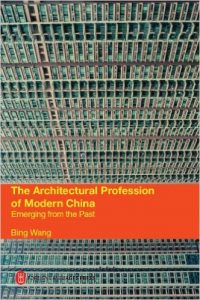The Architectural Profession of Modern China: Emerging from the Past
 With nearly half of the world’s construction activity taking place in China by 2015, the body of work produced by Chinese architects will profoundly impact the urbanized world. China’s display of bold, avant-garde architecture during the 2008 Olympics and the 2010 Shanghai World Expo contrasts starkly to China’s once more form-oriented and quantity-driven building production, which was prescribed by the country’s pursuit of all-at-once economic growth.
With nearly half of the world’s construction activity taking place in China by 2015, the body of work produced by Chinese architects will profoundly impact the urbanized world. China’s display of bold, avant-garde architecture during the 2008 Olympics and the 2010 Shanghai World Expo contrasts starkly to China’s once more form-oriented and quantity-driven building production, which was prescribed by the country’s pursuit of all-at-once economic growth.
What has become of China’s architectural profession? How did the profession survive the fettered isolation and tumultuous political and ideological change in its episodic history? Did it develop lock-step with China’s surging growth to provide the necessary architectural skills to support unprecedented building production? Is the profession well-prepared to experiment, take risks, and forge a practice model for the 21st century?
Wang’s book presents a systematic perspective on the architectural profession’s history and the ever-changing interplay between the state and the profession, from its established modern form in the 1920s to the present. Her detailed research illustrates how, when, and why the Chinese architectural profession assumed disparate forms at different historical stages, mirroring the country’s convoluted embrace of modernity. The analytical framework of this book is foundational for the understanding of the profession’s potential trajectory in future innovation and novelty in practice.
Beijing: Foreign Language Press, 2011